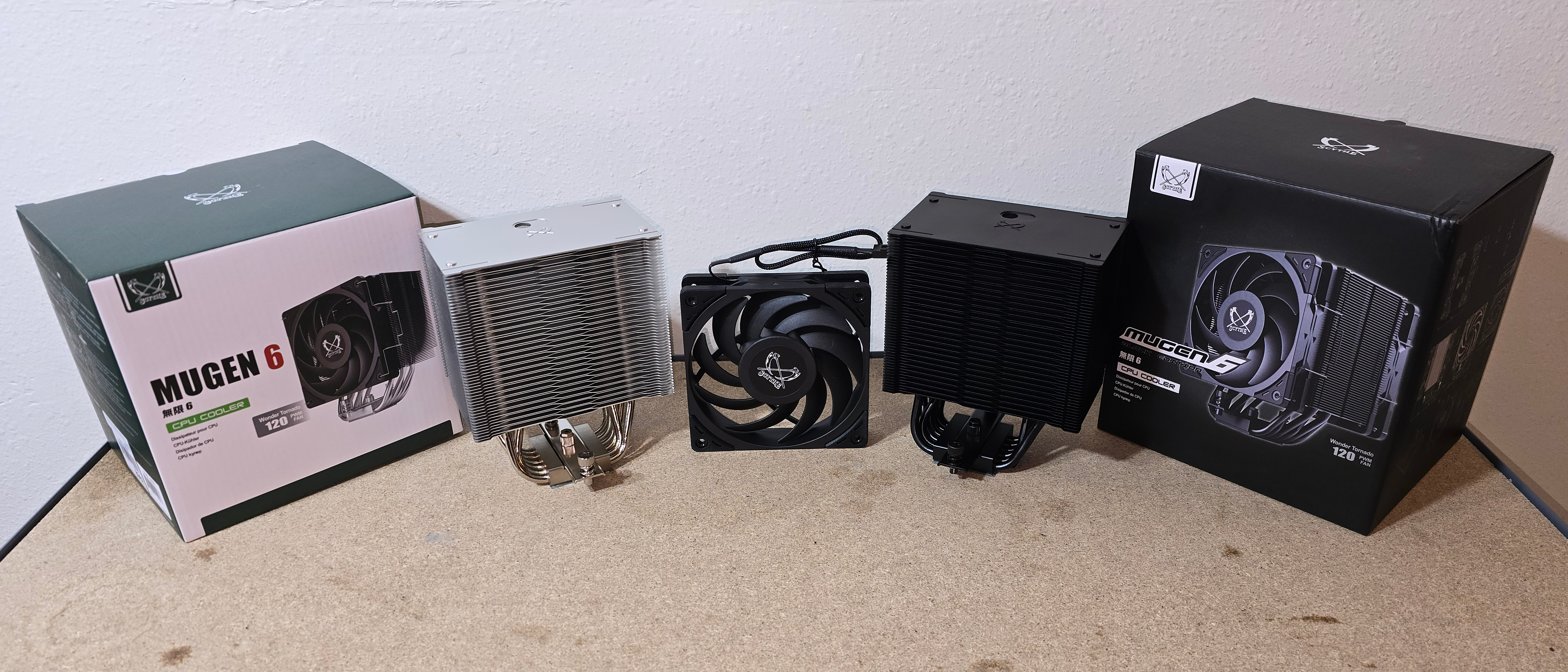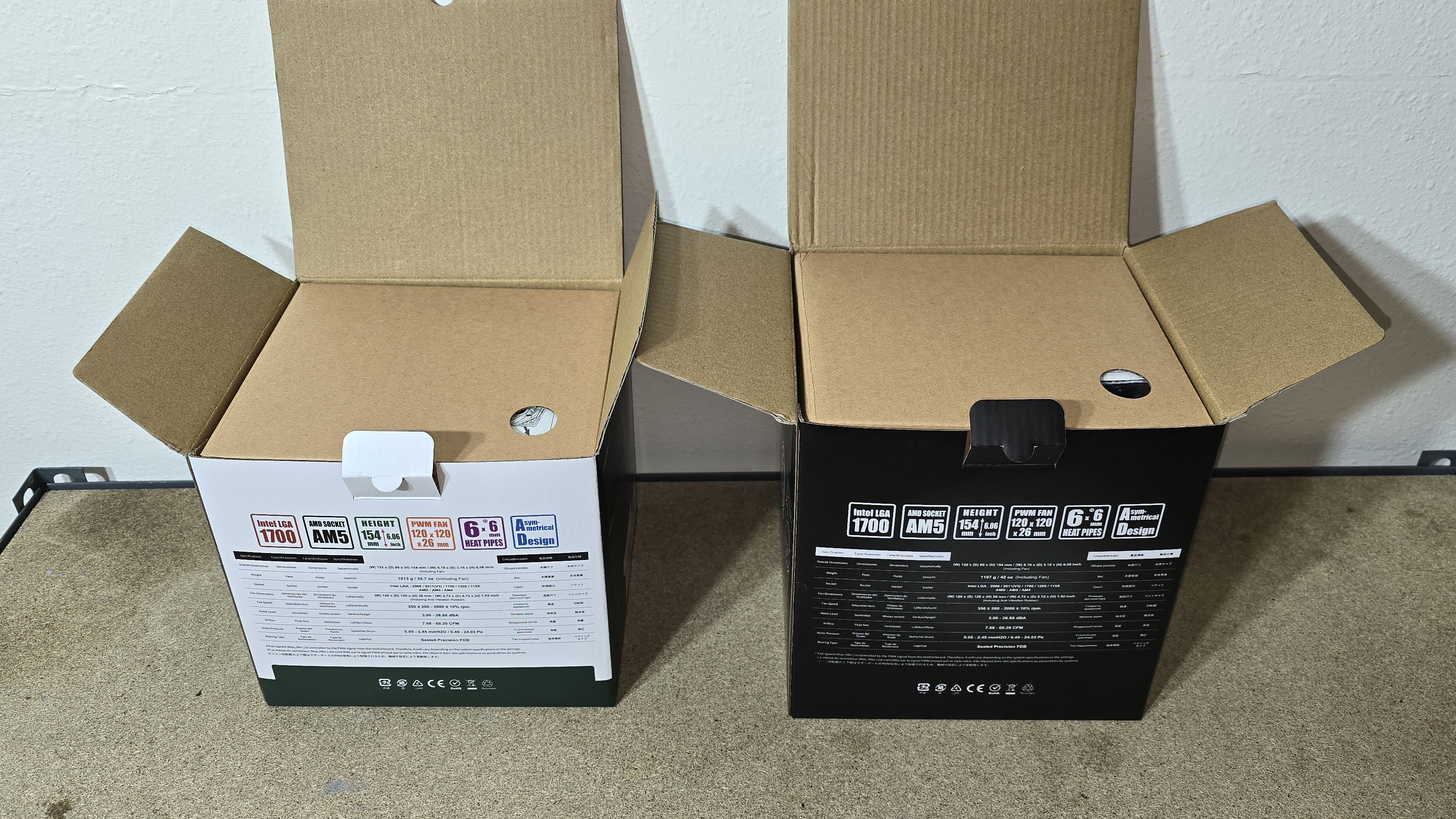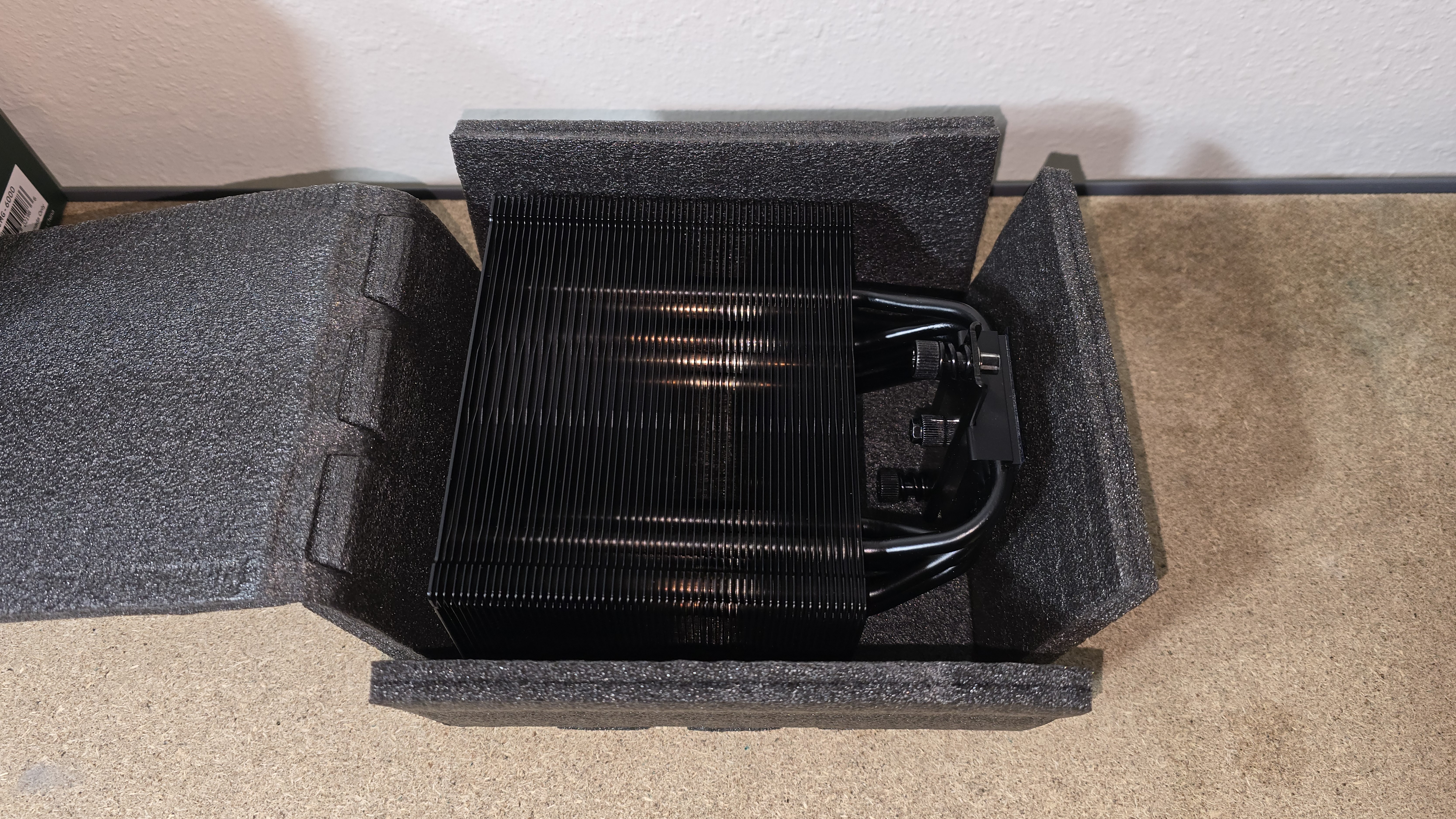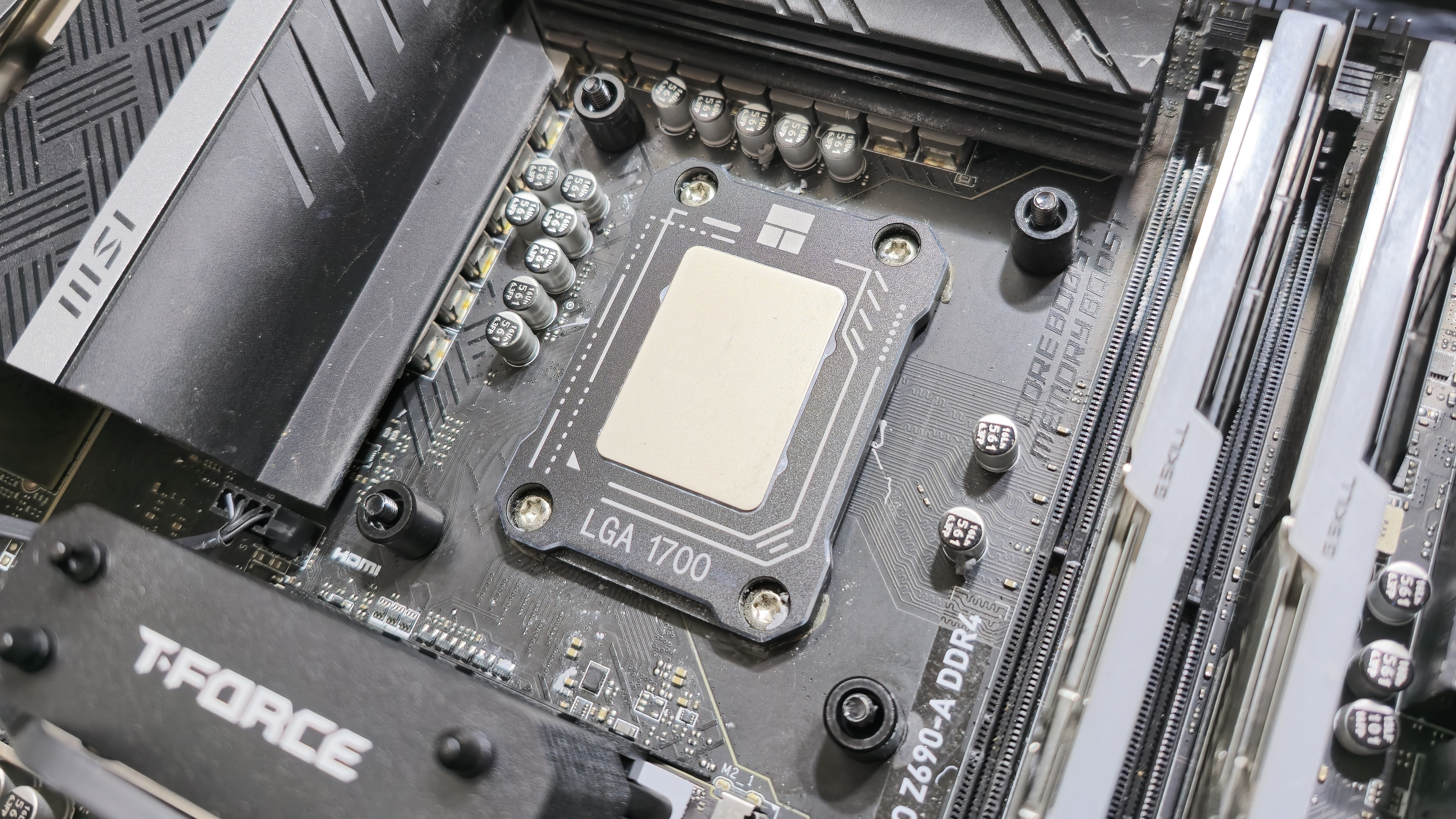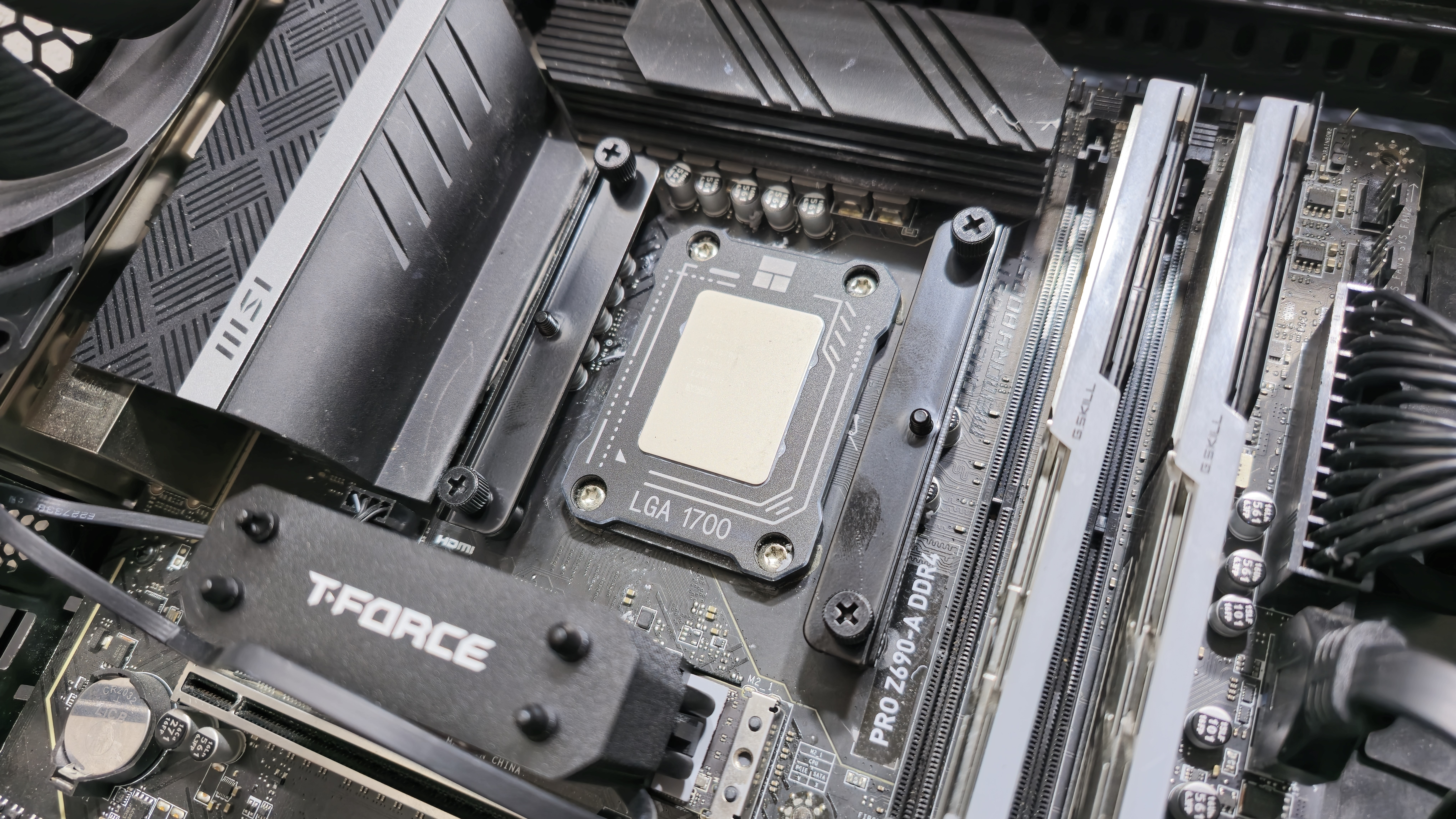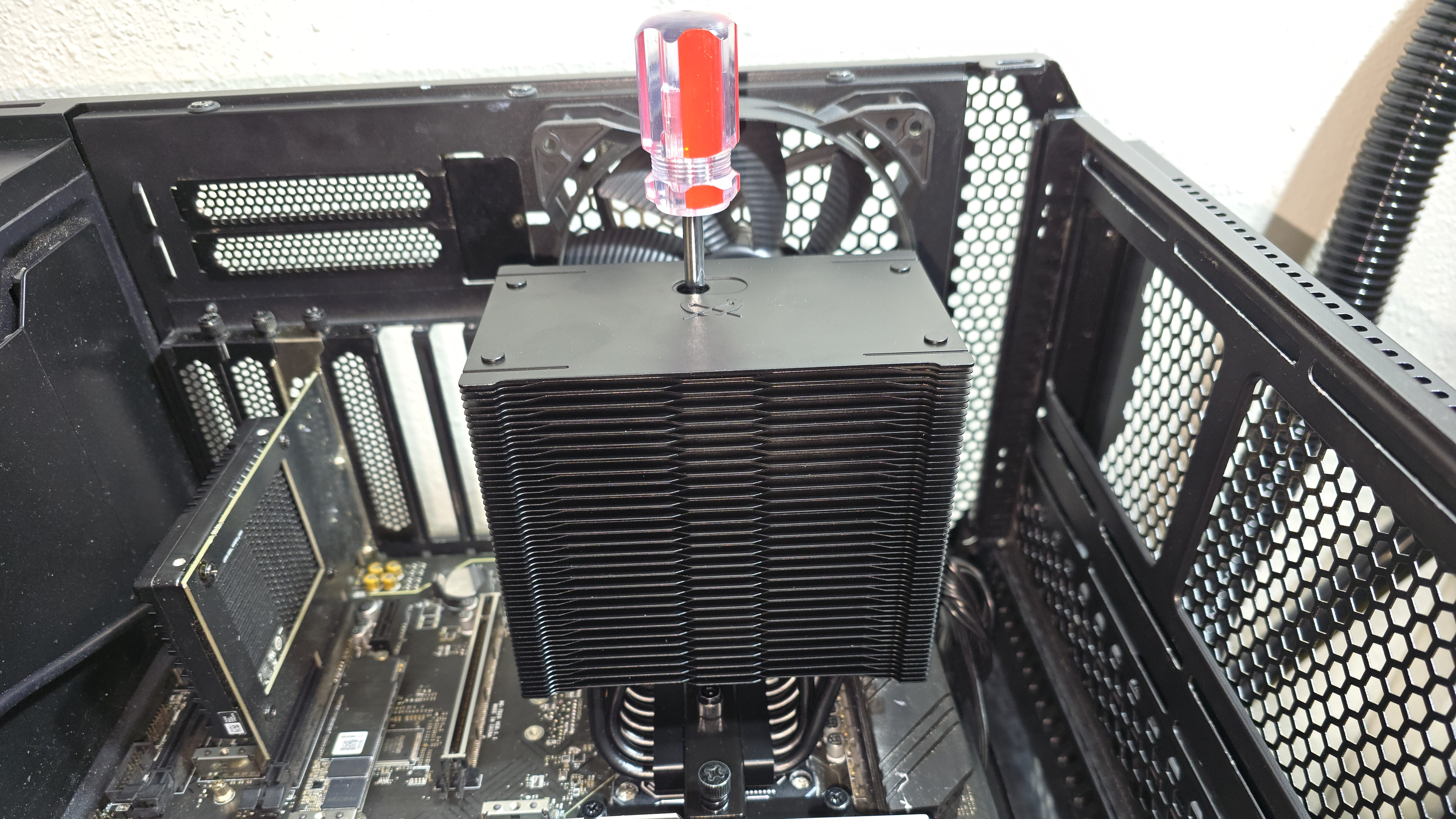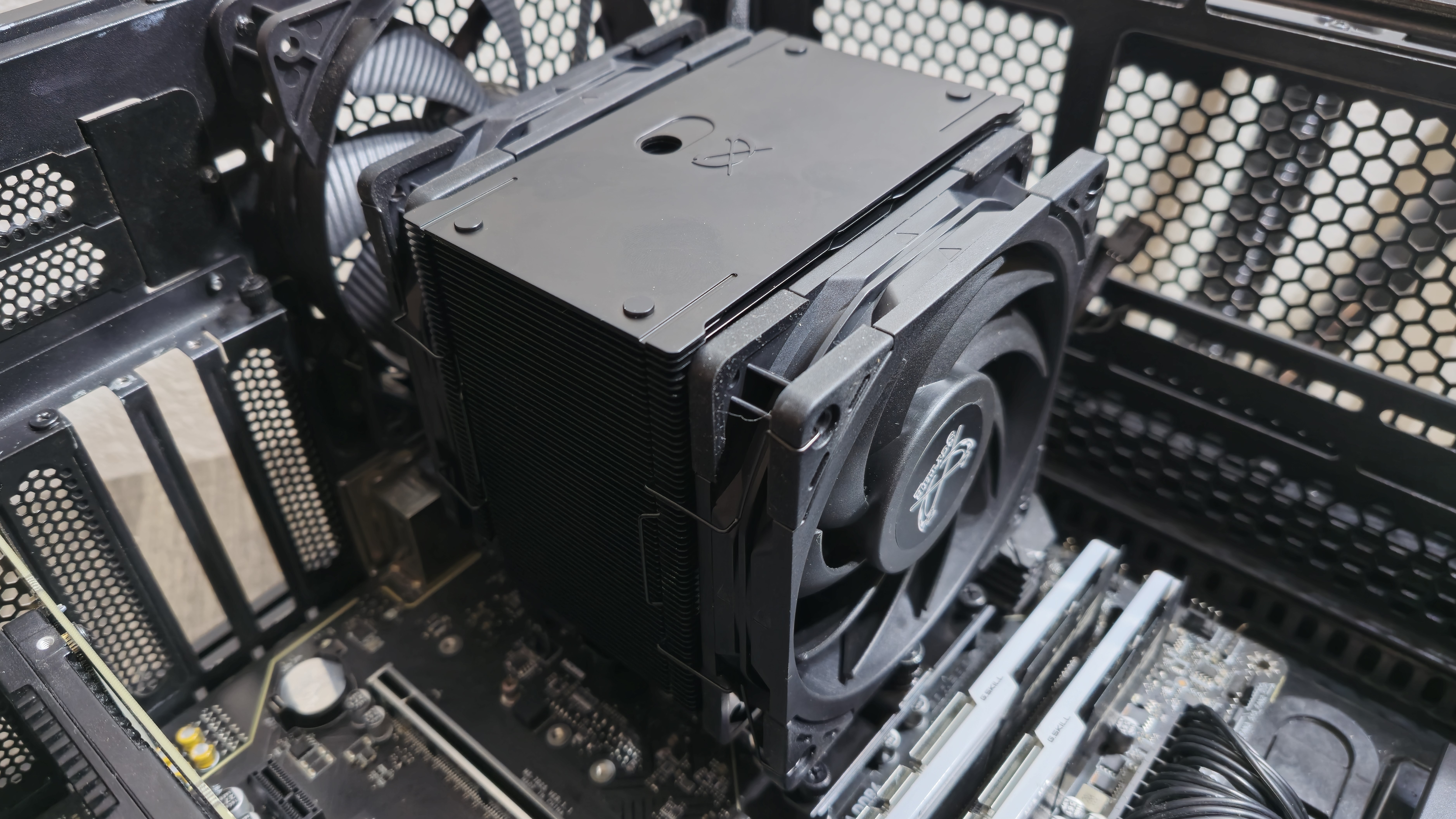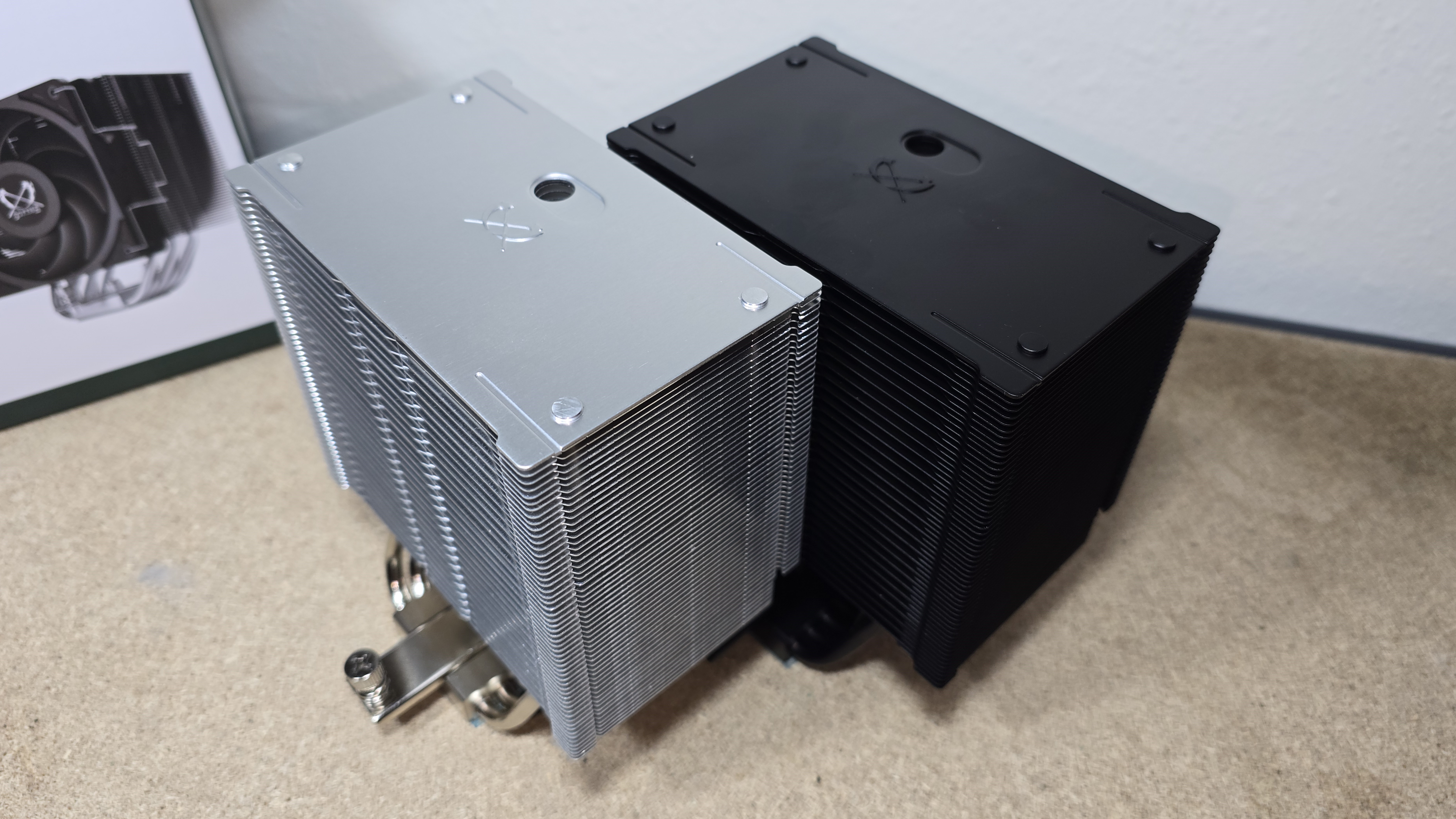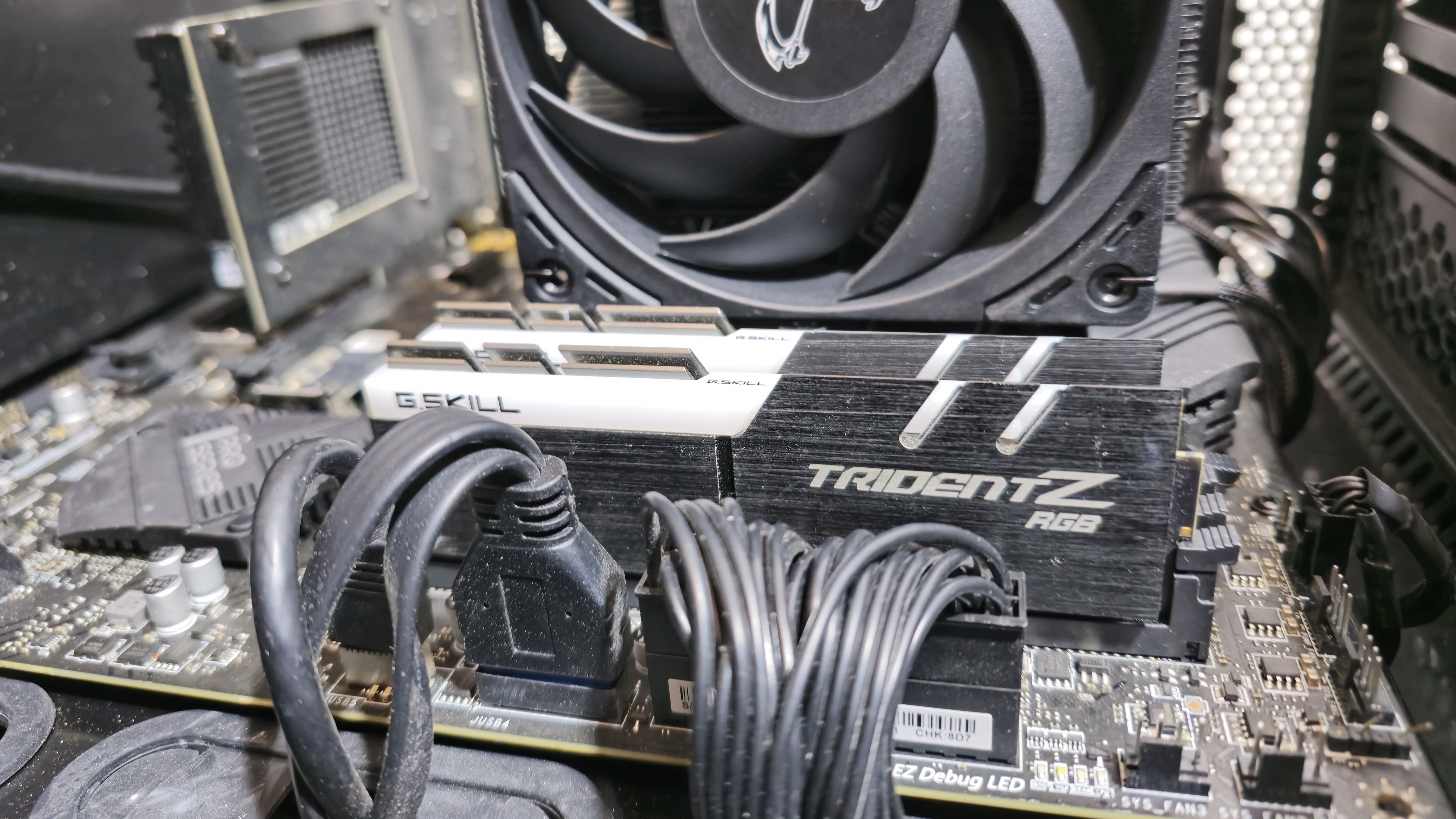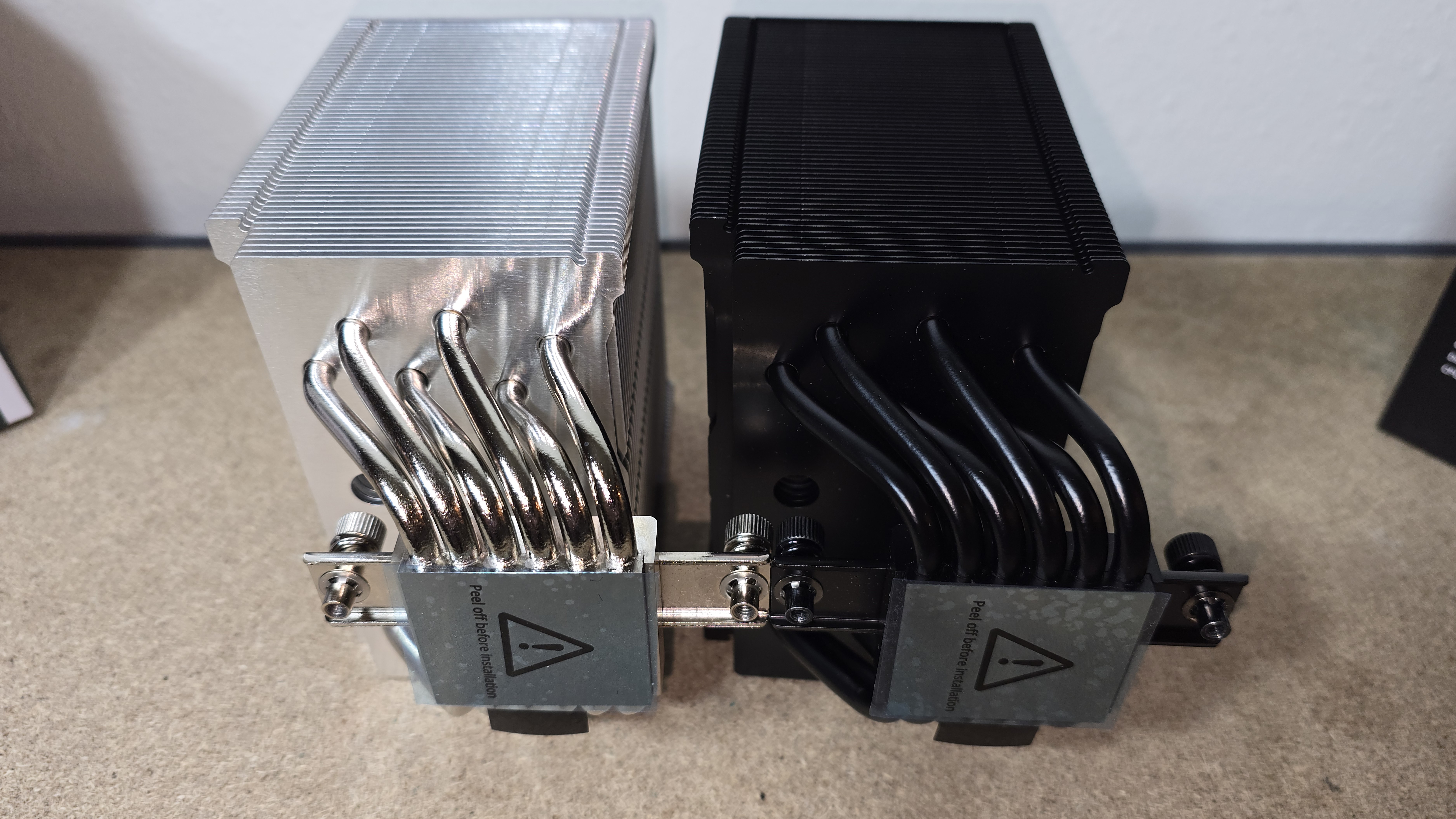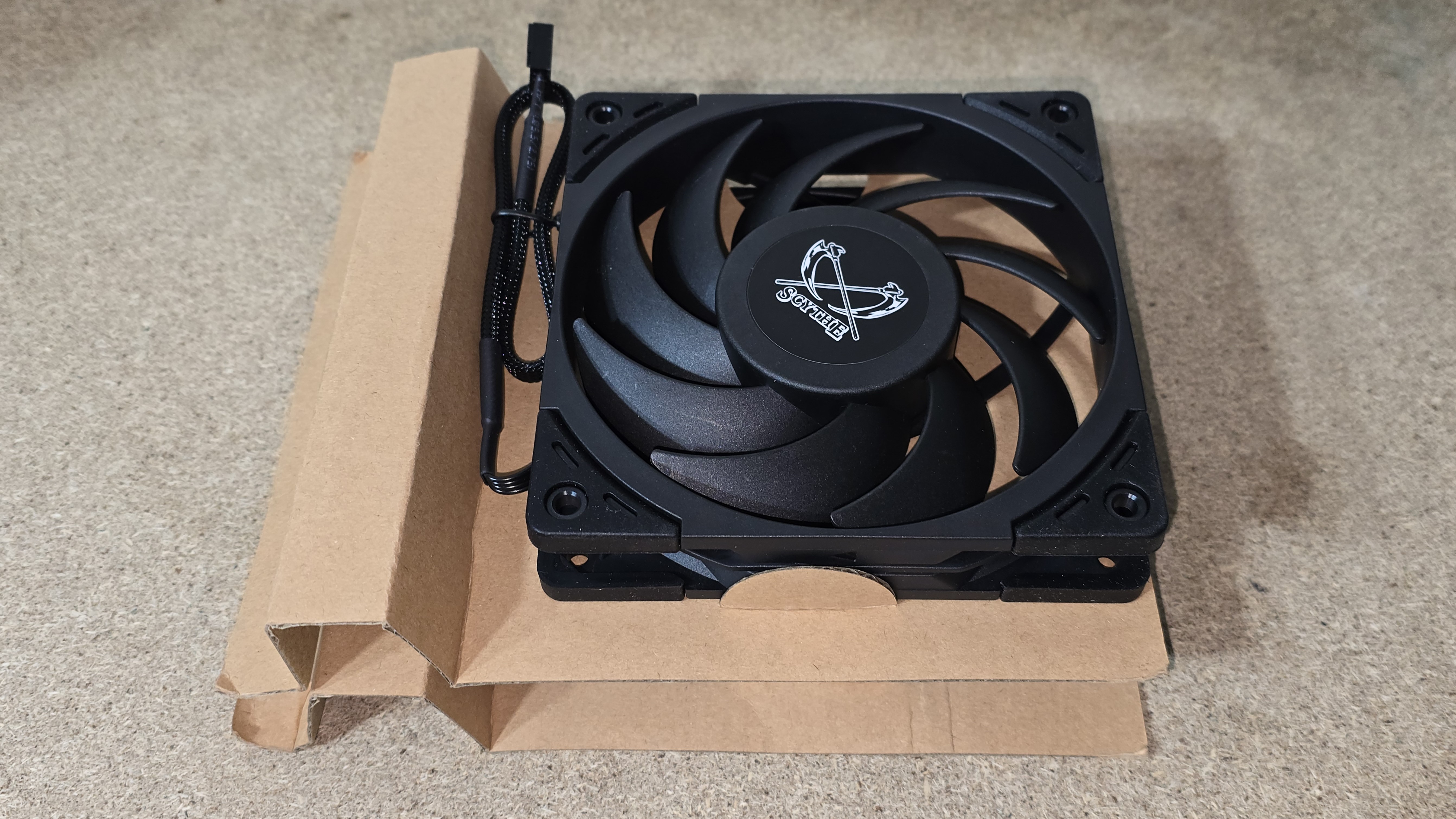Tom's Hardware Verdict
Scythe’s Mugen 6 is the air cooler to buy if you want good performance combined with the lowest possible noise levels at a reasonable price.
Pros
- +
Low noise levels
- +
Reasonable price
- +
Full RAM compatibility
- +
Reasonable price of $46.99/$54.99 USD
Cons
- -
Stronger similarly priced options exist, but they aren’t as quiet
Why you can trust Tom's Hardware
Unlike some of its competitors, Chiba Japan-based Scythe is a fabless company that partners with factories in China and Taiwan for manufacturing of its air coolers, fans and other PC hardware. The company has been delivering cooling products aimed largely at low noise and quiet performance for more than 20 years.
Scythe’s latest air coolers, the Mugen 6 and Mugen 6 Black Edition, are on our test bench today. The Mugen 6 features a single large heatsink with a staggered design for full RAM compatibility, paired with Scythe’s latest 120 Wonder Tornado fans. How do these models compare to last year’s Fuma 3, and are they good enough to make our list of the best CPU coolers on the market? We’ll have to look at the benchmarks to say for sure – but first, let’s quickly look at the specifications of these two coolers, straight from Scythe.
Cooler specifications
| Cooler | Scythe Mugen 6 | Scythe Mugen 6 Black Edition |
| MSRP | $46.99 | $54.99 |
| Heatsink Material | Aluminum | Aluminum |
| Socket Compatibility | Intel LGA 1700/115x/1200/2011/2066 AMD: AM5/AM4 | Intel LGA 1700/115x/1200/2011/2066 AMD: AM5/AM4 |
| Base | Nickel Plated Copper Base | Nickel Plated Copper Base |
| Max TDP with Intel’s i7-13700K (Our Testing) | 222W | 229W |
| Dimensions (including fans) | 154mm (L) x 132 mm (W) x 60mm (D) | 154mm (L) x 132 mm (W) x 80mm (D) |
Packing and included contents
The Mugen 6 package houses a small brown box containing the accessories, with the fan below, protected by folded cardboard. At the bottom of the package is the heatsink, protected by molded foam.
Included with the coolers are the following:
- 120mm Scythe Wonder Tornado fan(s) and fan clips
- Single Tower Heatsink
- Mounting for modern AMD and Intel Platforms
- Thermal Paste and application tool
- PWM splitter cord (Mugen 6 Black Edition only)
- Full-size screwdriver
- Manual
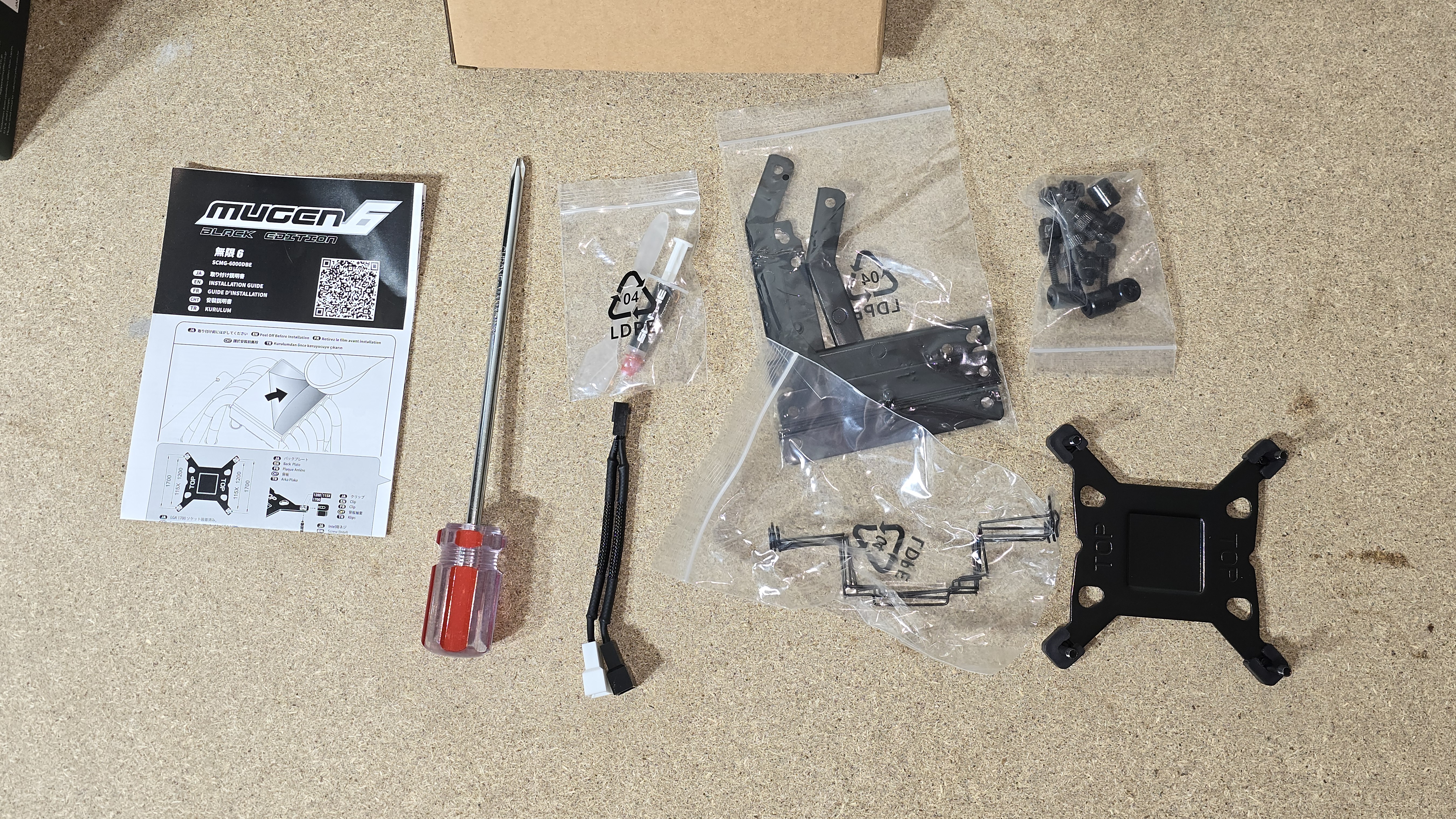
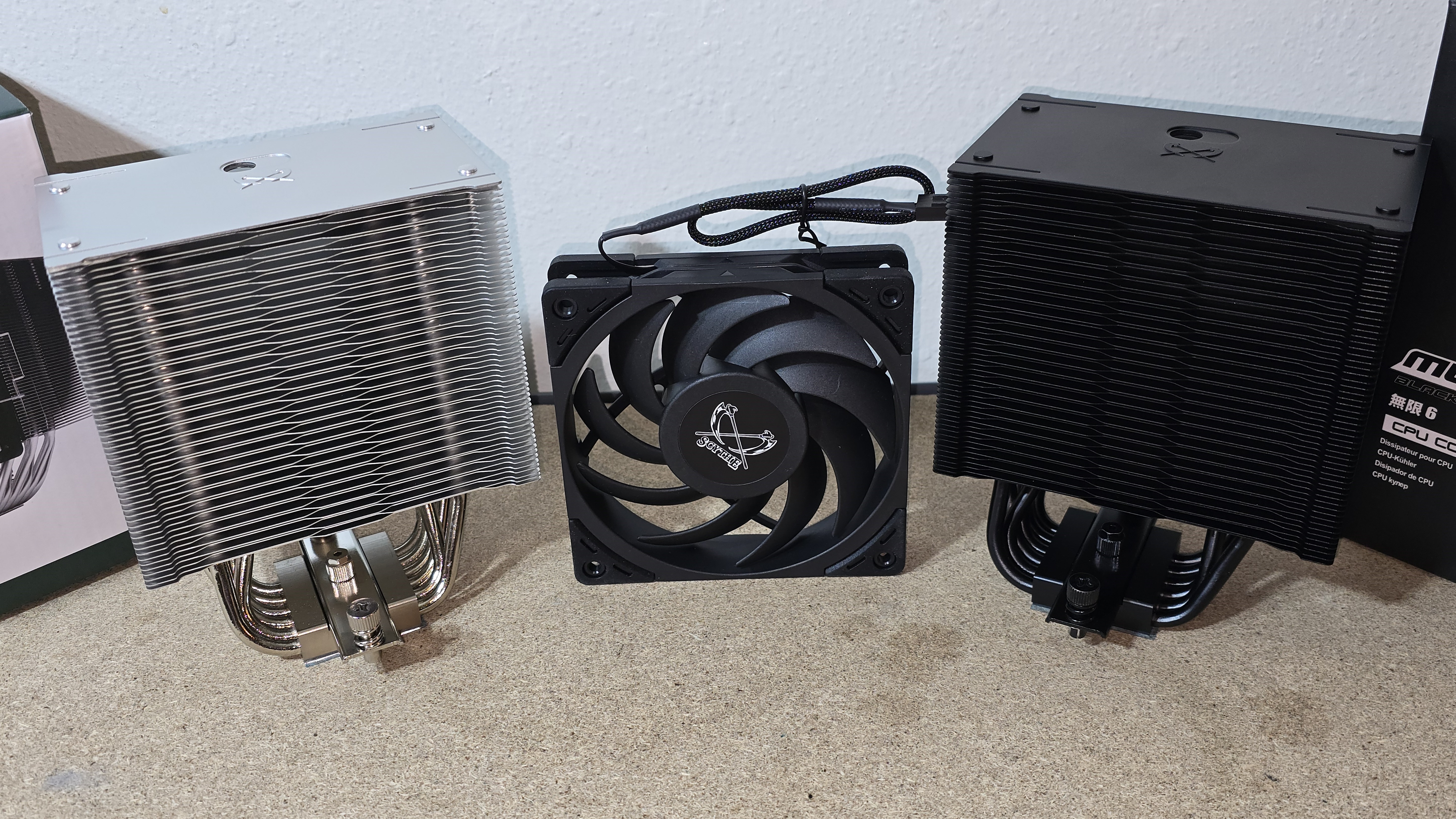
LGA 1700 installation
The installation of the Mugen 6 is pretty standard and straightforward.
1. Press the backplate against the rear of the motherboard and then secure it using the included plastic standoffs.
2. Next you’ll need to apply thermal paste to the CPU – if you're unsure how best to do that, see our How to Apply Thermal Paste primer.
Get Tom's Hardware's best news and in-depth reviews, straight to your inbox.
3. Place the mounting bars on top of the standoffs and secure them with the included screws.
4. Place the heatsink on top of the CPU and secure it using the screws on the mounting bar. One of these screws you’ll need to thread with the screwdriver through the heatsink, as shown below.
5. Secure the fan or fans on the cooler using the included fan clips. If you’re using the Black Edition, you’ll need to connect the fans to the PWM splitter cord first, before connecting them to the motherboard.
Features of Scythe’s Mugen 6 and Mugen 6 Black Edition
Differences between the Mugen 6 and Mugen 6 Black Edition
The design of the heatsinks included with the Mugen 6 and Mugen 6 Black Edition are identical, save for the color (silver vs black). The other difference? The Black Edition includes two fans, whereas the standard Mugen 6 only includes a single 120mm fan.
Full RAM compatibility
Some air coolers have compatibility issues with tall RAM – particularly if the first DIMM bank is used. That’s not an issue with Scythe’s coolers, which don’t interfere or overhang RAM in any manner. You can install any memory that’s compatible with your board here, no matter how tall the DIMMs are.
Six Copper Heatpipes
The Mugen 6 moves heat using six 6mm copper heatpipes, which is one or two less than some competing coolers. This initially caused me to worry that these units might underperform. But as you’ll see in our benchmarks, it performs well enough despite this deficit.
120mm Wonder Tornado fans
There’s more to a cooler than just the heatsink or radiator. The included fan or fans have a substantial impact on a cooler’s performance and are directly responsible for how loudly it runs.
Included with the Mugen 6 is Scythe’s 120mm Wonder Tornado fan, which has been optimized for thermal performance at lower noise levels. These fans include 9 swirl-shaped blades, with an improved blade-to-hub ratio compared to previous Scythe fans, and an upgraded frame body for improved durability. Scythe indicates its confidence in the quality of these fans with a lifespan rating of over 120,000 hours.
| Model | Wonder Tornado 120mm fan |
| Dimensions | 120 x 120 x 25mm |
| Fan Speed | Up to 2000 RPM ± 10% |
| Air Flow | Up to 60.29 CFM |
| Air Pressure | Up to 2.45mmH2O |
| Bearing Type | Sealed Precision FDB |
| Lighting | None |
| MFFT | >120,000 hours |
LGA1700 Socket Bending
There are many factors other than the cooler that can influence your cooling performance, including the case you use and the fans installed in it. A system's motherboard can also influence this, especially if it suffers from bending, which results in poor cooler contact with the CPU.
In order to prevent bending from impacting our cooling results, we’ve installed Thermalright’s LGA 1700 contact frame into our testing rig. If your motherboard is affected by bending, your thermal results will be worse than those shown below. Not all motherboards are affected equally by this issue. I tested Raptor Lake CPUs in two motherboards. And while one of them showed significant thermal improvements after installing Thermalright’s LGA1700 contact frame, the other motherboard showed no difference in temperatures whatsoever! Check out our review of the contact frame for more information.
Testing methodology
Today's highest-end CPUs, whether Intel or AMD, are difficult to cool in intensive workloads. In the past. reaching 95 degrees Celsius or more on a desktop CPU might have been a cause for concern. But with today’s top-end CPUs, this is considered normal operation. Similar behavior has been present in laptops for years due to cooling limitations in tight spaces.
All testing is performed with a 23 degrees Celsius ambient room temperature. Multiple thermal tests are run on each CPU to test the cooler in a variety of conditions, and acoustic measurements are taken with each result. These tests include:
1. Noise-normalized testing at low noise levels
2. “Out-of-the-box”/default configuration thermal & acoustics testing
a. No power limits enforced
b. Because CPUs hit TJMax in this scenario, the best way to compare cooling strength is by recording the total CPU package power consumption.
3. Thermal & acoustic testing in power-limited scenarios
a. Power limited to 175W to emulate a medium-intensity workload
b. Power limited to 125W to emulate a low-intensity workload
The thermal results included are for 10-minute testing runs. To be sure that was sufficiently long to tax the cooler, we tested both Thermalright’s Assassin X 120 R SE and DeepCool’s LT720 with a 30-minute Cinebench test with Intel’s i9-13900K for both 10 minutes and 30 minutes. The results didn’t change much at all with the longer test: The average clock speeds maintained dropped by 29 MHz on DeepCool’s LT720 and 31 MHz on Thermalright’s Assassin X 120 R SE. That’s an incredibly small 0.6% difference in clock speeds maintained, a margin of error difference that tells us that the 10-minute tests are indeed long enough to properly test the coolers.
Testing configuration – Intel LGA1700 platform

Albert Thomas is a contributor for Tom’s Hardware, primarily covering CPU cooling reviews.
-
toffty Nice to see Scythe continuing to make coolers. They don't seem to be as well known but I've used them for my last two builds and I've been happy with them.Reply -
rluker5 I also have an older Mugen cooling a 13600k in my living room ITX. Really nice cooler if you are staying below 200w on the CPU. The newer ones seem slightly better.Reply -
thestryker Seems like a good deal if you're looking for good noise profile without the cooler being giant.Reply -
Avro Arrow Man, these things are expensive! I just use an AMD Wraith Prism. It cost me (literally) nothing and it cools my R7-5800X3D just fine. To be fair, X3D CPUs aren't overclockable and thus only run at stock settings but almost $50 is a good chunk of change that I'd rather spend on a better CPU or GPU.Reply
